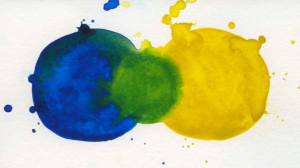
Dyes and pigments brighten and add vibrancy to our lives. Though pigments have touched an average individual’s life in every possible way, they form the basis for earning the daily bread and butter for an artist or a painter. Pigments help the artist to create beautiful pictorial visions on canvas which is savoured by each and every other individual.
The artist comes into contact with several types of pigments, solvents, thinners etc. As such he has to handle them with caution as some of them can have adverse effects on his life. Though the quantities handled by him at a time may be small, continuous use can prove toxic in the long run. Several factors such as the artist’s age, physical condition, size, habits also play an important role in determining the painter’s reactions to certain pigments. Thinners and solvents are used for cleaning brushes, removal of paint drops from clothing or skin or for thinning varnishes and paints. Some of these can also pose a health hazard.
The ingredients that go into the making of pigment yellow, pigment blue or pigment green have to be checked out for arsenic or lead content. Lead carbonate, lead chromate, cobalt arsenate or pigments containing cadmium, mercury etc are said to have toxic effects on an individual’s health. Now, how can pigments affect an artist’s health?Pigments can harm the painter if they enter his body through inhalation or through open wounds or cuts on a regular basis.
Harm through inhalation occurs when pigments in the powdered form are used. Using prepared acrylic or oil colours pose no health hazard as there is no chance of any pigment dust being raised. When the artist uses powdered pigment he should not do anything that will cause unnecessary dispersion leading to inhalation of poisonous dust. All painters working in the egg tempera, fresco and encaustic techniques need to take care. Scraping specific dried areas of paintings for smoothening the hardened effect has to be done only after ensuring that the particles do not stick to the skin or drift into the food items or the lungs. Whenever greater volumes of pigment dust are going to be generated as in the case of long hours of grinding colours then it is better for the artist to don a respirator mask as a protective device. Adequate exhaust ventilation has to be present in the studio room so that harmful fumes are thrown outside.
Pigments can pose a hazard to the artist in several other ways too. For example, if the artist eats his food while working, then the paint traces can easily drift into the food items or stick to the food utensils. If the paint brushes or other equipment is cleaned in the same sink meant for cleaning the food utensils then again there is a danger of contamination. Cleaning of paint aprons, overalls or other equipment has to be therefor done separately.
An artist needs to give vent to his innate creativity and the fact of any pigment being toxic cannot prevent him from displaying the painting effect that he feels is necessary. However, working with an awareness and taking the necessary care and caution can definitely help him achieve what he aims to achieve in his painting exhibits.